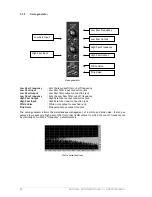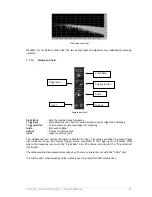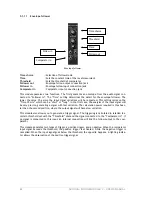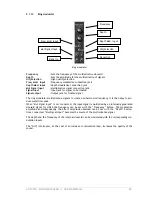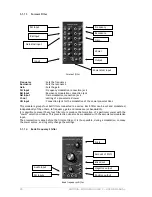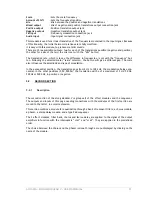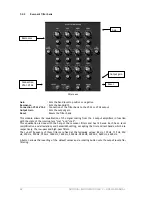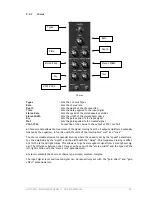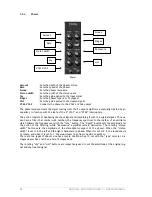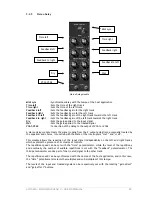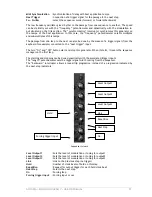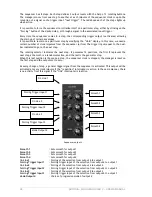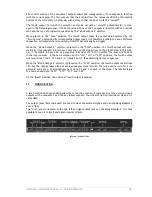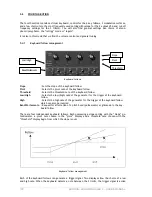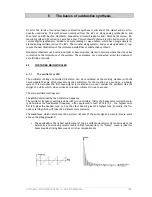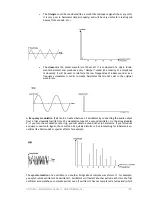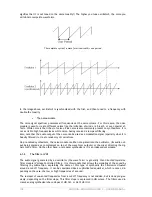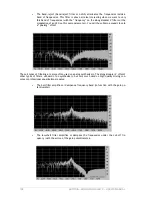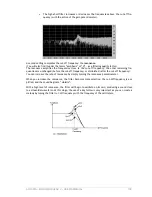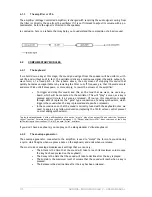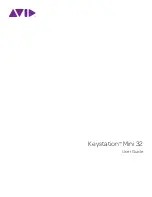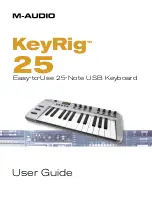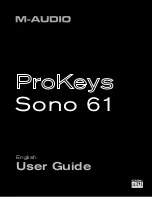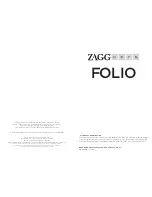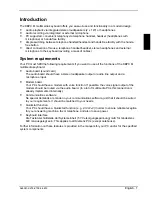
ARTURIA – MOOG MODULAR V – USER’S MANUAL
95
5.2.5 Stereo
Delay
Stereo Delay module
Midi sync
: Synchronizes delay with the tempo of the host application
Time left
: Sets the time of the right track
Time right
: Sets the time of the left track
Feedback left
: Sets the feedback gain for the right track
Feedback right
: Sets the feedback gain for the left track
Feedback to left
: Sets the feedback gain of the right track towards the left track
Feedback to right
: Sets the feedback gain of the left track towards the right track
Dry
: Sets the gain applied to the input signal
Wet
: Sets the gain applied to the treated signal
VCA1-VCA2
: Connection of the delay to the output of VCA1 or VCA2
A stereo delay module treats the signal coming from the 2 output amplifiers, eventually treated by
the equalizer and chorus, in function with the state of the interrupters “vca1” and “vca2”.
This module allows the repetition of the input signal independently on the left and right tracks,
which explains the presence of 2 columns of controls.
The repetition speed can be set with the “time” potentiometer, while the level of the repetitions,
and eventually the number of audible repetitions is set with the “feedback” potentiometer. The
third potentiometer sends a part of the treated signal to the other track.
The repetition speed can be synchronized with the tempo of the host application, and in this case,
the “time” potentiometer selects the multiples and sub-multiples of this tempo.
The levels of the input and treated signals can be respectively set with the rotating “gain direct”
and “gain effect” buttons.
Midi sync
Time right
Time left
Feedback right
Feedback left
Feedback to left
Feedback to right
Wet
Dry
VCA1-VCA2
Summary of Contents for Moog Modular V
Page 1: ...USER S MANUAL Moog Modular V 2 ...
Page 4: ......
Page 8: ......
Page 18: ...18 ARTURIA MOOG MODULAR V USER S MANUAL ...
Page 52: ...52 ARTURIA MOOG MODULAR V USER S MANUAL ...
Page 85: ...ARTURIA MOOG MODULAR V USER S MANUAL 85 Independent mode Parallel mode Serial mode ...
Page 102: ...102 ARTURIA MOOG MODULAR V USER S MANUAL ...






